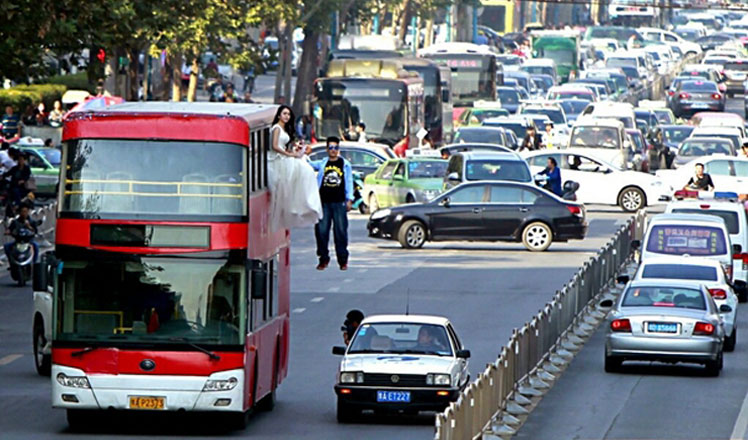China's young return to traditional roots
Updated: 2015-10-07 08:31
By Guo Ying(China Daily)
|
||||||||
Dressed in the style of the Han Dynasty that ruled China 1,800 years ago, 6-year-old Chen Quanjin is chanting ancient Chinese classics with several other children about the same age as their heads sway from side to side.
Instead of taking piano lessons or joining an overseas study tour, Chen spent his summer vacation doing traditional Chinese studies at the Chengxian Guoxue Institute in Guozijian, China's highest education institute from the 13th to 19th centuries.
Chen has mastered the Dizigui, a Chinese book dating back more than 300 years that lays out standards for being a good child and student. He says the three-character verses are understandable and trip off the tongue.
"Older siblings should befriend younger ones; younger siblings should respect and love older ones. Siblings who keep harmonious relationships among themselves are being dutiful to their parents," Chen quotes from the work.
With students aged mostly from 4 to 10, the Chengxian Guoxue Institute aims to expand children's exposure to traditional culture through introductions to Confucianism, Chinese calligraphy and other traditional values, says director Ji Jiejing.
"Traditional Chinese culture should not lose its grip on young Chinese as it is good for their moral development and the cultivation of their character. Some wisdom delivered through the Chinese classics might help children deal with the challenges in their own lives," Ji says.
- EU offers Turkey cash, closer ties for migration help
- ROK, Japan to hold defense ministers' talks next week
- 5 countries elected as non-permanent members of UN Security Council
- Obama slows pace of US troop withdrawal in Afghanistan
- Democratic rivals back Clinton on emails
- Myanmar gov't signs ceasefire accord with armed groups

 Trump card
Trump card
 Shaolin monks display kung fu skills in London
Shaolin monks display kung fu skills in London
 'Newlyweds' are 'floating' on air in Zhengzhou
'Newlyweds' are 'floating' on air in Zhengzhou
 Buckingham Palace prepares for Xi's visit
Buckingham Palace prepares for Xi's visit
 Shanghai Fashion Week: We COUTURE
Shanghai Fashion Week: We COUTURE
 World's top 10 innovative economies
World's top 10 innovative economies
 Cui: China, US should share global vision
Cui: China, US should share global vision
 Speaking Mandarin attracts Chinese homebuyers in the US
Speaking Mandarin attracts Chinese homebuyers in the US
Most Viewed
Editor's Picks

|

|

|

|

|

|
Today's Top News
Tu first Chinese to win Nobel Prize in Medicine
Huntsman says Sino-US relationship needs common goals
Xi pledges $2 billion to help developing countries
Young people from US look forward to Xi's state visit: Survey
US to accept more refugees than planned
Li calls on State-owned firms to tap more global markets
Apple's iOS App Store suffers first major attack
Japan enacts new security laws to overturn postwar pacifism
US Weekly

|

|








